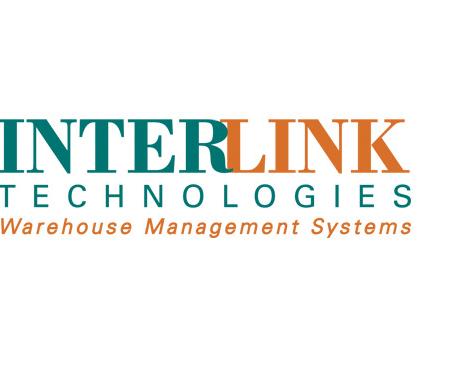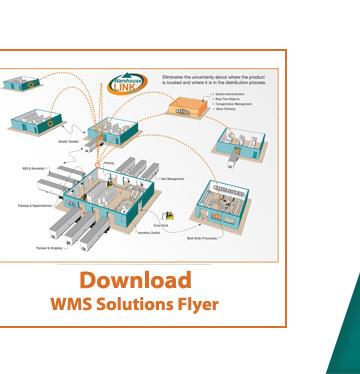How Important is Inventory Accuracy?
Paying close attention to inventory accuracy and employing techniques and technology solutions to improve inventory accuracy increases profits and provides additional benefits throughout the entire organization.
According to research commissioned by Zebra Technologies*, respondents indicated that their inventory accuracy is 66%, which is a considerable margin from acceptable accuracy rates of 95% - 99%. A Warehouse Management System, such as Warehouse-LINK®, is the key to achieving 99% inventory accuracy. Locations and quantities are only the beginning of the information that a WMS can provide for inventory accuracy.
Inventory Locations
Locating inventory without WMS can be like looking for a needle in a haystack. The inability to locate the inventory influences the inventory accuracy – if you can’t find it, it’s not available inventory. There could be multiple reasons for the inability to locate the product. For example, the stock might be split between several locations, or there may be only one worker who knows inventory location, and he is absent from work. Warehouse-LINK® WMS takes the guesswork out of finding the inventory and knowing the quantities at every location.
WMS uses business rules that associate the inventory with inventory locations. For every item, there is a preferred location and alternate locations. Using barcode scans, the WMS system “remembers” and tracks inventory and location. Access to the inventory location and quantities on hand is available to anyone with authority to the information.
The WMS system determines and directs the warehouse worker to the putaway and picking locations, then requires a barcode scan confirmation of the product and the location. Not only is this method faster and more efficient, but it is also updated real-time as the actions occur on the warehouse floor. Gone are the days of wasting time and labor searching the warehouse for the correct product to fulfill a customer order.
Inventory Quantities
In the past, a physical inventory count was the best effort to audit inventory on hand. The drawbacks were many: very labor-intensive, usually required a shutdown, and provided only a static count. This method was prone to mistakes, and accuracy was undependable.
Utilizing a WMS for automatic cycle counts achieves inventory accuracy consistently in real-time. There is no need to shut down warehouse operations for automatic cycle count. Opportunity, directed, and on-demand cycle counts provide different approaches for performing cycle counts at any time. Opportunity cycle count occurs when a location reaches empty. A quick and easy way to perform a cycle count is by confirming zero product in the physical location with the WMS system. Directed cycle count merges cycle counting into the daily routine. Usually, a cycle count schedule is set up based on inventory movement – counting fast-moving inventory more frequently than slow-moving inventory. However, any number of factors can determine the cycle count schedule. Lastly, on-demand cycle count can occur at any time or any location.
Inventory Information
It is hard to put an exact value on inventory information, but without accurate data, the information is worthless. WMS provides reliable, precise inventory information that extends beyond location and quantity, and affects multiple sectors of an organization.
Inventory accuracy is critical to prepare for sales demand. Accurate inventory quantities affect manufacturing runs and sales forecasts. Manufacturing depends on warehousing to have adequate storage for the inventory needed to fulfill orders, especially during sales promotions. Warehouse-LINK’s® dependable inventory accuracy is the ideal link between sales, manufacturing, and warehousing.
Quality control depends on accurate inventory information to ensure customers are receiving the correct product. Wrong products and expired products should never reach the customer. Inventory accuracy includes tracking lot/batch/serial numbers and dates such as expiration, manufacture, receive dates. Accuracy includes following FIFO rules, environmental controls, and customer requests. Shipping accuracy reduces the burden of returns and simplifies the recall process. Tracking accurate inventory information from suppliers/vendors allows for quality and cost comparisons.
Space Management
Managing warehouse space is critical for most companies. Warehouse space is expensive, so it is essential to utilize every square inch. Growing companies look for ways to squeeze the maximum inventory into the current space until the expansion is complete. Warehouse-LINK® collects and analyzes inventory information such as product dimensions, cubic capacity, environment requirements, controlled substances, velocity, and replenishment to determine the ideal warehouse location and is dependent on inventory accuracy. “You can’t fit a square peg into a round hole.”
Maximizing warehouse space requires a flexible system for dynamic slotting and mixing items in locations or storing items in multiple locations. Just-In-Time (JIT) is another process that maximizes warehouse space. To accomplish any of these space management techniques, it requires a dependable, proven warehouse management system that ensures inventory accuracy.
Inventory accuracy ranks near the top of the supply chain challenges that can make or break a business. Depend on a warehouse management system, such as Warehouse-LINK®, for inventory accuracy. For more information call 1-800-655-5465 or visit interlinktech.com.








